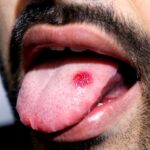Molluscum contagiosum is a common viral skin infection that affects people of all ages, but it is most commonly seen in children. While molluscum contagiosum is generally harmless and self-limiting, understanding its signs, symptoms, and causes is crucial for effective management and prevention of transmission. In this article, we’ll explore the key aspects of molluscum contagiosum to increase awareness and promote timely intervention.
What is Molluscum Contagiosum?
Molluscum contagiosum is a viral infection caused by the molluscum contagiosum virus (MCV), a member of the poxvirus family. The infection typically manifests as small, flesh-colored bumps or lesions on the skin, often with a central indentation or dimple. Molluscum contagiosum is highly contagious and can spread through direct skin-to-skin contact, as well as through contaminated objects such as towels, clothing, and toys.
Signs and Symptoms
The hallmark sign of molluscum contagiosum is the appearance of small, dome-shaped bumps on the skin, ranging in size from 2 to 5 millimeters in diameter. These bumps may be flesh-colored, pink, or white and often have a central dimple or indentation. In some cases, the lesions may become inflamed, red, or itchy, particularly if scratched or irritated.
Molluscum contagiosum lesions commonly appear in the following areas:
- Face
- Neck
- Armpits
- Arms
- Hands
- Genital area (in adults)
Causes
Molluscum contagiosum is caused by the molluscum contagiosum virus (MCV), which is transmitted through direct contact with infected skin or contaminated objects. The virus enters the body through breaks in the skin, such as small cuts, scratches, or abrasions. Once inside the body, the virus replicates in the skin’s outer layer, leading to the formation of characteristic lesions.
Risk Factors
Several factors increase the risk of developing molluscum contagiosum, including:
- Close contact with infected individuals, such as family members, classmates, or teammates.
- Participation in activities that involve skin-to-skin contact, such as wrestling, gymnastics, or contact sports.
- Compromised immune system, such as in individuals with HIV/AIDS or undergoing immunosuppressive therapy.
- Poor hygiene practices, such as sharing towels, clothing, or personal care items with infected individuals.
Complications
In most cases, molluscum contagiosum is a benign and self-limiting condition that resolves on its own without treatment within 6 to 12 months. However, complications can occur, particularly in individuals with weakened immune systems or extensive lesions. Potential complications of molluscum contagiosum include:
- Secondary bacterial infections of the lesions, leading to cellulitis or abscess formation.
- Persistent or recurrent lesions, especially in individuals with compromised immune function.
- Scarring or hyperpigmentation at the site of the lesions, particularly if the lesions are scratched or manipulated.
Diagnosis and Treatment
Diagnosing molluscum contagiosum is typically based on the characteristic appearance of the lesions. In some cases, a healthcare provider may perform a skin biopsy or viral culture to confirm the diagnosis. Treatment for molluscum contagiosum is usually not necessary, as the condition tends to resolve spontaneously over time. However, treatment may be recommended in certain cases, particularly if the lesions are extensive, bothersome, or cosmetically concerning.
Treatment options for molluscum contagiosum include:
- Cryotherapy: Freezing the lesions with liquid nitrogen to destroy the virus-infected cells.
- Curettage: Scraping the lesions with a sharp instrument to remove the infected tissue.
- Topical treatments: Applying medications such as imiquimod cream or tretinoin gel to the lesions to stimulate the immune system and promote lesion resolution.
- Laser therapy: Using laser technology to destroy the lesions and surrounding tissue.
Prevention
Preventing the spread of molluscum contagiosum involves practicing good hygiene and avoiding close contact with infected individuals. To reduce the risk of transmission, follow these preventive measures:
- Avoid direct skin-to-skin contact with infected individuals, especially if they have visible lesions.
- Wash hands frequently with soap and water, especially after touching or treating lesions.
- Avoid sharing towels, clothing, or personal care items with infected individuals.
- Cover lesions with waterproof bandages or clothing to prevent direct contact with others.
- Teach children about the importance of not scratching or picking at their lesions to prevent spread and complications.
Molluscum contagiosum is a common viral skin infection caused by the molluscum contagiosum virus (MCV). While generally harmless, molluscum contagiosum can be bothersome and contagious, especially in children and individuals with compromised immune systems. Understanding the signs, symptoms, and causes of molluscum contagiosum is essential for effective management and prevention of transmission. If you suspect you or your child may have molluscum contagiosum, consult a healthcare provider for diagnosis and appropriate management. With proper care and preventive measures, individuals can effectively manage molluscum contagiosum and prevent further spread of the infection.










